Fluid-Structure Interaction over HAWT Turbine Vibration (one-way)
$270.00 $135.00 Student Discount
- The problem numerically simulates the Fluid-Structure Interaction over HAWT Turbine using ANSYS Fluent software.
- We design the 3-D model by the Design Modeler software.
- Mesh grid is generated using ANSYS Meshing , and the element number equals 3,465,821.
- The MRF method is used to rotate the turbine.
- FSI model analyses total strain, and stress over the turbine.
To Order Your Project or benefit from a CFD consultation, contact our experts via email (info@mr-cfd.com), online support tab, or WhatsApp at +44 7443 197273.
There are some Free Products to check our service quality.
If you want the training video in another language instead of English, ask it via info@mr-cfd.com after you buy the product.
Description
Project Description:
In this project, we aim to analyze a Fluid-structure interaction over a HAWT turbine. In this simulation a flow with the speed of 25 m/s heats the turbine, and the turbine itself rotates with 12 RPM. The FSI process was in one-way which we analyzed a fluid effect on the structure.
The total deformation was around 0.2 m at the tip of the blades. Also, the bending stress and strain have been analyzed too.
Also a one-way simulation of Fluid-Structure Interaction over HAWT Turbine was previously conducted,
The geometry is designed in ANSYS Design Modeler software.
In addition, an unstructured mesh grid is generated using ANSYS Meshing software. As a result, 3,465,821 cells were generated.
Methodology: Fluid-Structure Interaction over HAWT Turbine
MRF and FSI have been used to simulate HAWT turbine motion. the velocity is 25 m/s and the operating pressure is 101235 pa. The RPM was set to 12 and the hub has been a simple joint.
The fluid is simulated in fluent and structure section modeled in ANSYS Structure.
Results:
As the results obtain the pressure and speed in the domain and the structure section we obtained total deformation, strain, and stress over the turbine.
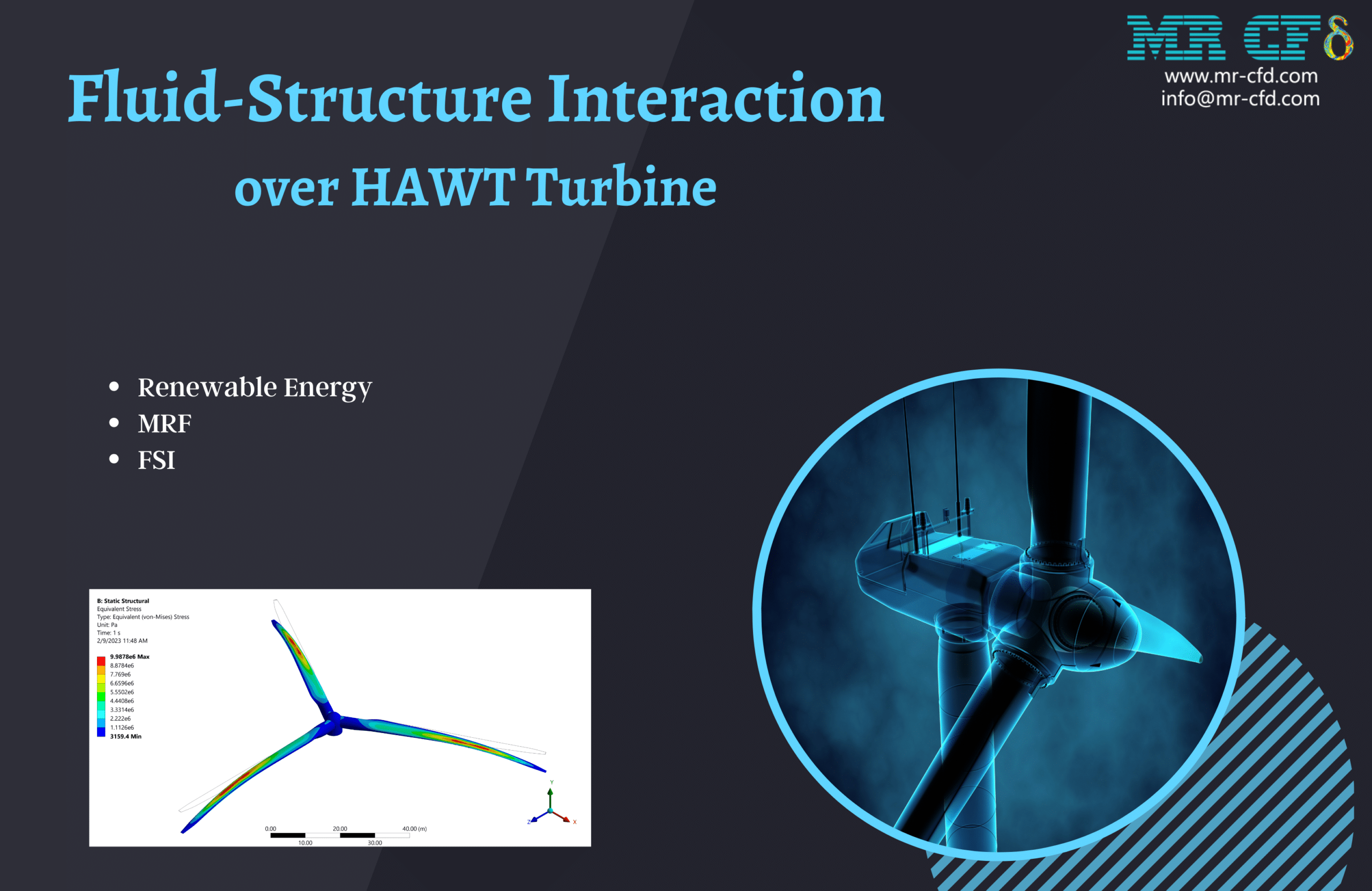


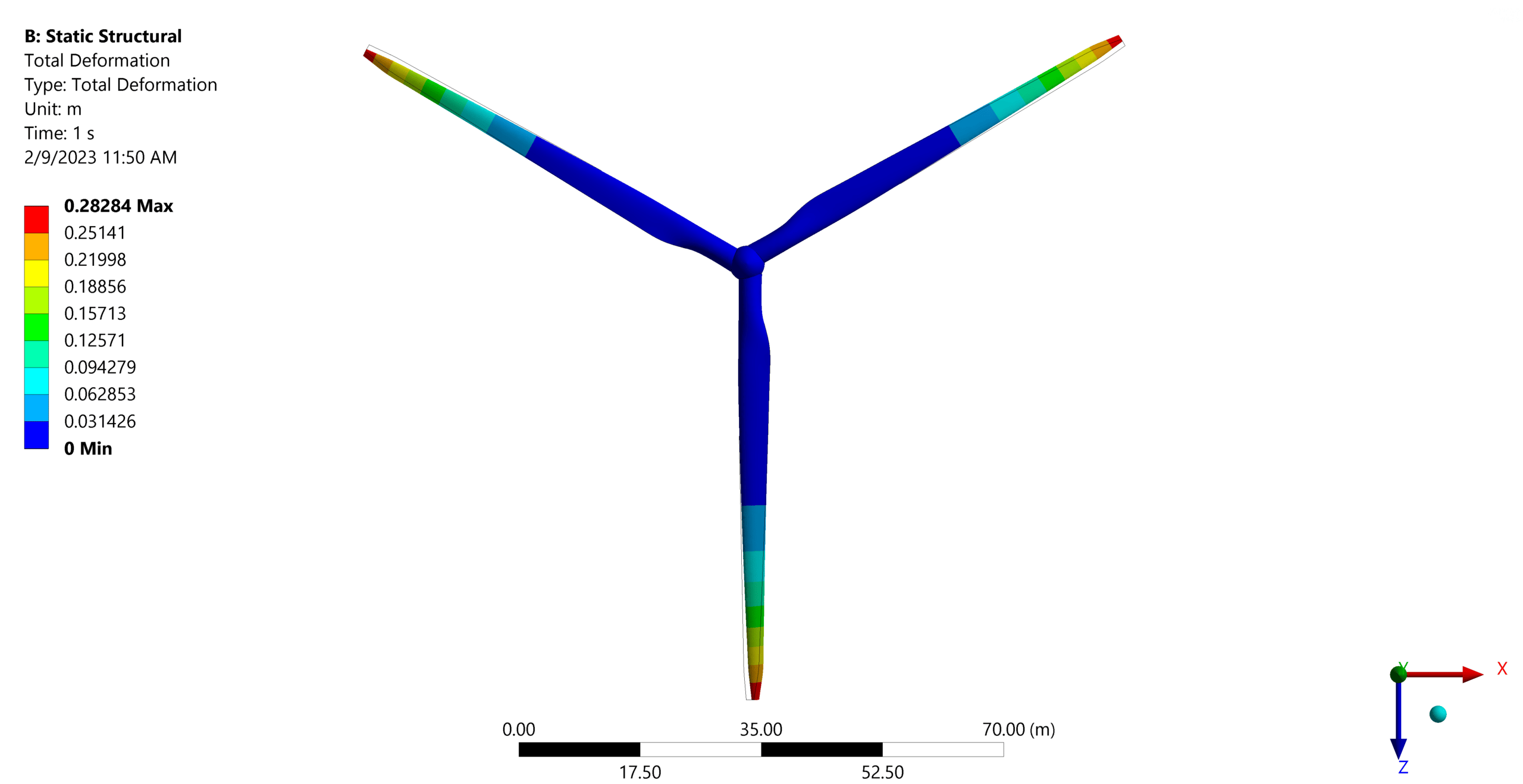
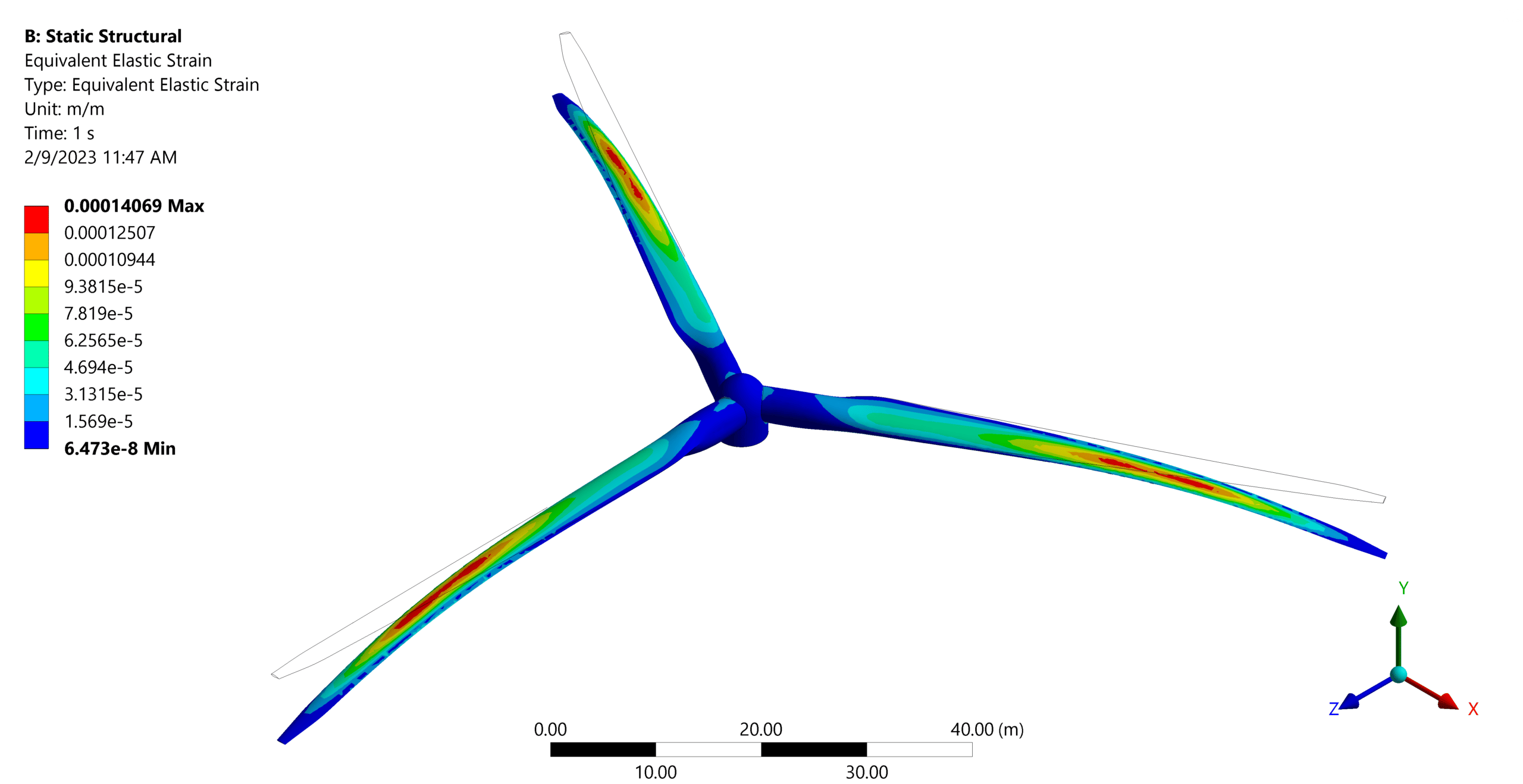


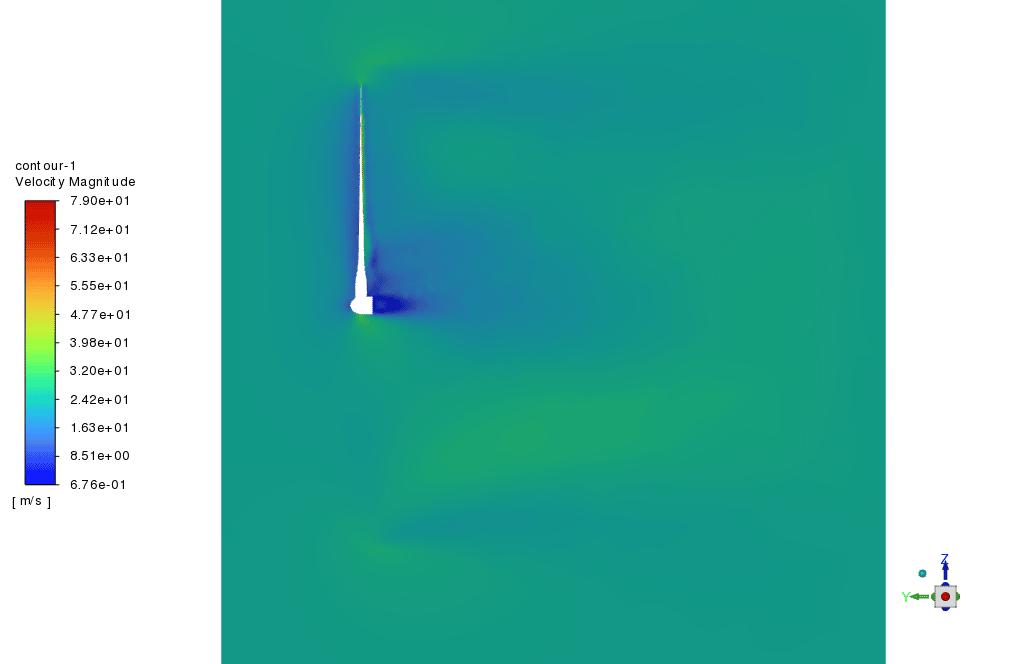
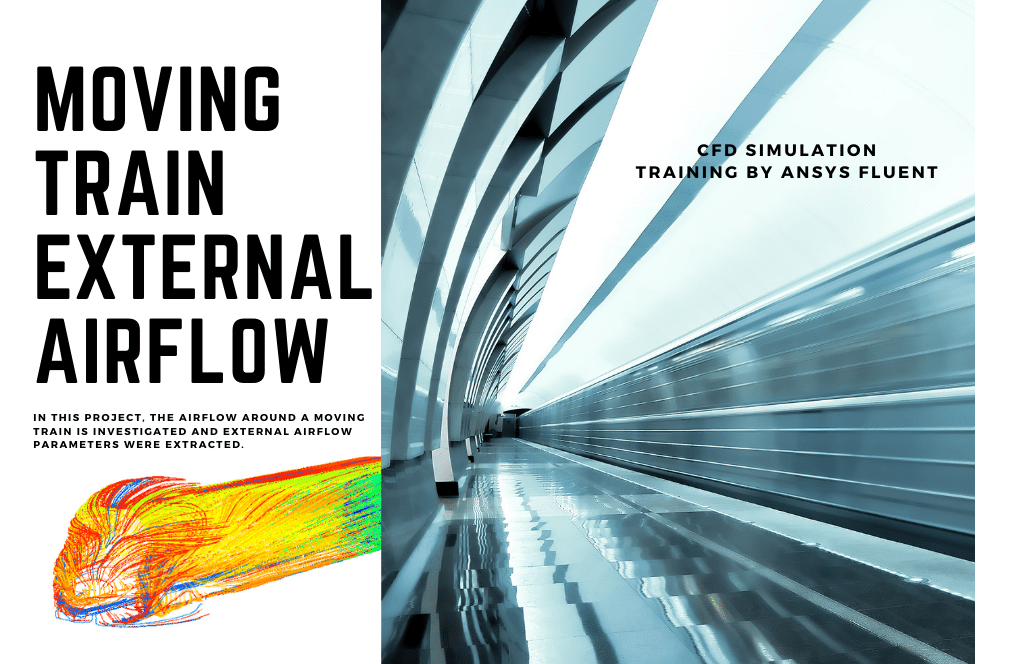
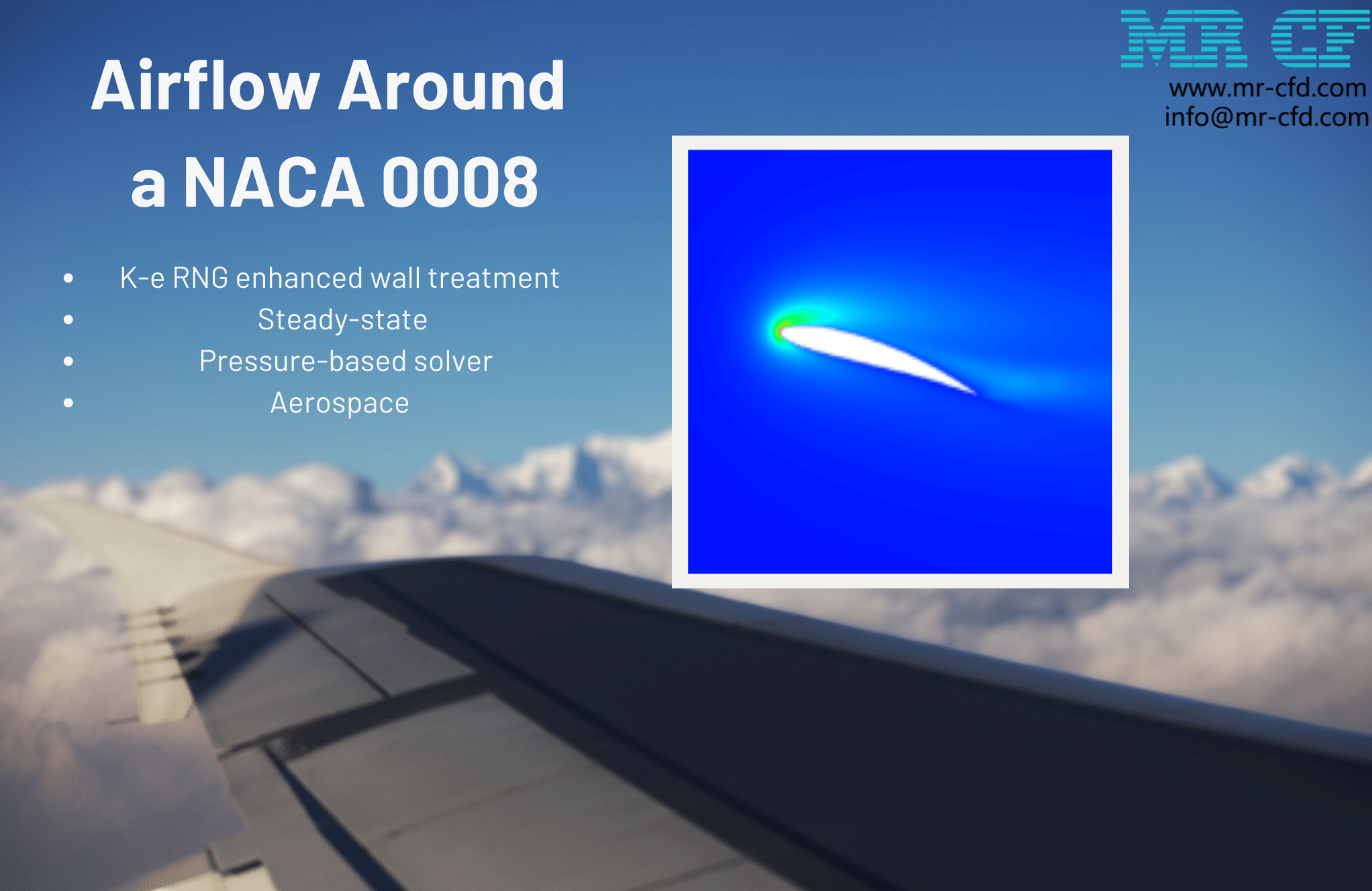
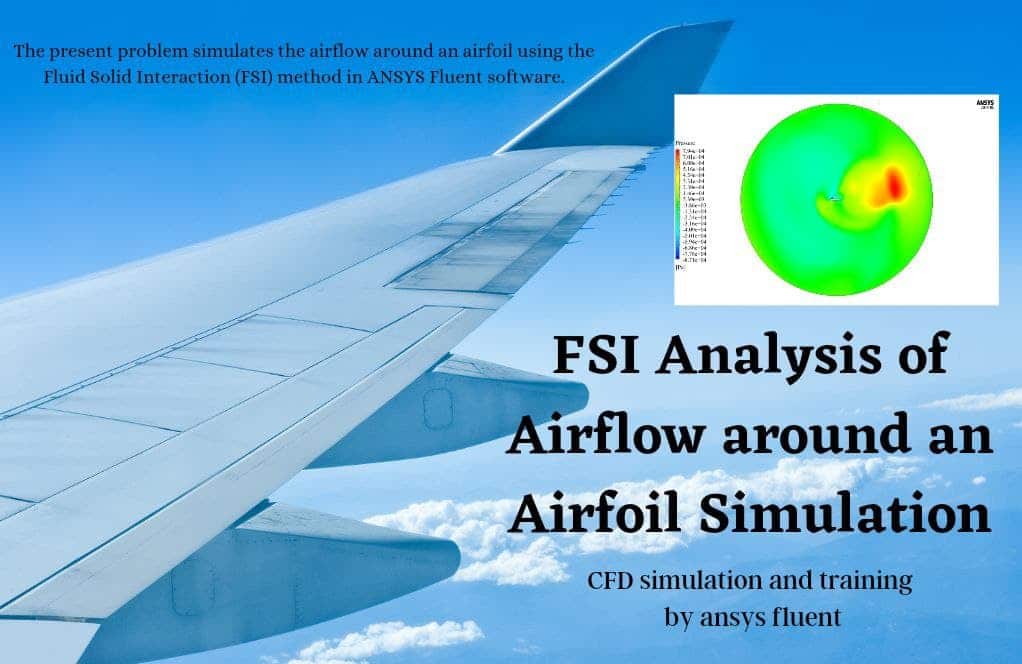

Adalberto Simonis DVM –
Just read about your Fluid-Structure Interaction over HAWT Turbine Vibration simulation – what a fascinating project! The precise rpm control and the deformation results are so crucial for real-life applications. It goes to show the level of detail and accuracy the software allows for. Kudos to the MR CDF team for such a well-structured simulation workflow.
MR CFD Support –
Thank you for the positive feedback! We’re delighted to hear that you appreciate the intricacies of our Fluid-Structure Interaction simulation on the HAWT turbine. Our team works hard to deliver accurate and detailed simulations that serve real-world purposes. Your support motivates us to continue delivering high-quality CFD products!
Savanna Padberg I –
I’m impressed by the results of the HAWT turbine’s FSI analysis. It’s particularly intriguing to see how the structural responses, like the deformation and stress, were captured using this method. Well done on the detailed work and the clear depiction of the interaction between the fluid and structure.
MR CFD Support –
Thank you for your positive feedback! We’re glad to hear that you found the Fluid-Structure Interaction analysis detailed and informative. We always strive to ensure our simulations accurately capture the complex interactions in these systems, and it’s rewarding to know it’s appreciated by our customers.
Elenor Dietrich –
Does the turbine’s rotation speed affect the deformation results significantly?
MR CFD Support –
In the simulation setup, the rotation speed of the turbine directly impacts the deformation. Since the turbine rotates at 12 RPM, the centrifugal forces applied to the blades due to rotation contribute to the deformation observed, especially at the blade tips. The 0.2 m deformation at the blade tips indicates that the rotation speed has a significant effect, influencing the results.
Ozella Green –
The overall effect of the fluid on the turbine blades was impressive in terms of responsiveness. The step-by-step methodology and the visuals helped a lot in understanding the FSI applied to HAWT. Great work on documenting the mesh generation and interpretation of results!
MR CFD Support –
Thank you for your gracious feedback! We’re thrilled to hear that the methodology documentation and visuals met your expectations, assisting in a clear understanding of the FSI concepts applied to the HAWT turbine. Your positive remarks are highly appreciated, and we look forward to continuing to meet your expectations with our simulations.
Rupert Kemmer –
The project outcome on HAWT turbine vibration analysis using FSI is impressive! I’ve learned a lot from this and found the information on deformation and stress very useful for my studies.
MR CFD Support –
Thank you for your positive feedback! We are pleased to hear that our analysis of the HAWT turbine using Fluid-Structure Interaction (FSI) was useful for your studies. If you have any more questions or need further information, please feel free to reach out.
Izabella Kiehn I –
I’m thrilled with how thorough the HAWT turbine FSI simulation was, the stress and deformation data was particularly useful for my research on turbine durability.
MR CFD Support –
Thank you for your positive feedback! We’re delighted to hear that our simulation helped with your research on turbine durability. If you need further assistance or have any more questions about our CFD products, feel free to reach out.
Angelita Schulist PhD –
The detailed simulation really brings the project to life! The flow impact on the structure and the results, including deformation and strain analysis on the HAWT turbine, are fascinating. Kudos to MR CFD for an insightful FSI analysis.
MR CFD Support –
Thank you for your enthusiastic feedback! We’re thrilled to hear that you found the FSI analysis of the HAWT turbine both informative and interesting. We appreciate your compliments and are glad we could provide insightful results that enrich your understanding of the turbine’s behavior under fluid-structure interaction conditions.
Sammy Glover –
I’m impressed by the level of detail in the simulation and analysis of the HAWT turbine vibration! It’s really beneficial to see both the fluid and structural perspectives to fully understand the turbine’s performance and durability under operational conditions.
MR CFD Support –
Thank you for your positive feedback! We appreciate that you recognized the thoroughness of our simulation process. Detailed analysis is crucial for an accurate understanding of the dynamics involved in HAWT turbine operations. If you have any further insights or need more information, we’re always here to assist you.
Mr. Tavares Thiel –
This training has maximized my understanding of FSI in turbines. The detailed breakdown of deformation and stress analysis adds incredible value. Just brilliant!
MR CFD Support –
Thank you for your kind words! We’re glad to hear that our Fluid-Structure Interaction training has contributed positively to your knowledge of turbine simulations. We aim to provide informative and valuable learning experiences. Your feedback is truly appreciated!
Mr. Gaylord Hagenes –
I was blown away by the level of detail in the FSI analysis over the HAWT turbine. Seeing the results of how the blades deform and strain under fluid forces was incredibly insightful for my own projects.
MR CFD Support –
Thank you so much for your review! We’re delighted to hear that our detailed FSI analysis was insightful and helpful for your projects. Your positive feedback encourages us to keep delivering high-quality and valuable insights in our simulations.
Dr. Andy Johnston –
I just wanted to express my satisfaction with the FSI simulation course for the HAWT turbine. The detailed breakdown of steps and the explanation of the methodology were exceptionally clear and helpful. Seeing the total deformation results and understanding how the bending stress and strain were analyzed has greatly enhanced my knowledge in the field of aerodynamics.
MR CFD Support –
Thank you for your positive feedback! We are thrilled to hear that the course on Fluid-Structure Interaction over a HAWT turbine was clear, informative, and valuable to you. Understanding aerodynamics and FSI is crucial in the field, and we are glad our simulation was able to enhance your knowledge and skills. We look forward to providing you with more learning materials that can aid in your development. Keep an eye out for upcoming courses!
Fanny Brown MD –
I enjoyed going through the insights provided by the simulation on the HAWT turbine. The level of detail describing the deformation at the tips of the blades and the bending stress was commendable. Would you happen to have more detailed visualization materials or reports showcasing this deformation and stress distribution on the turbine?
MR CFD Support –
Thank you for the positive feedback! We’re glad you found the information insightful. We do indeed have more detailed visualization materials and reports that outline the deformation and stress distribution on the HAWT turbine. Detailed contour plots, animations, and thorough analysis reports are available, which capture the nuances of the turbine’s behavior under fluid-structure interaction. Feel free to reach out if you require access to these additional resources, and we would be more than happy to assist.
Edd Sporer –
This project on the HAWT turbine simulation is impressive! It clearly demonstrates the complex interaction of fluid and structural forces at an extremely high level—being able to model the deformation effects with great detail is quite a breakthrough in simulation technology. It must have required meticulous planning and skilled execution. Well done to the team behind this project!
MR CFD Support –
Thank you for your kind words! We strive to provide detailed and accurate simulations to help understand the complex dynamics of fluid-structure interactions. We are delighted to hear that you appreciate the level of detail and expertise involved in the project.
Mr. Justus Stamm –
Really learned a lot from this FSI analysis on the HAWT turbine. The interplay between the aerodynamic forces and structural responses of the turbine blades were insightful. Great job bringing complex phenomena to life with clarity.
MR CFD Support –
Thank you for your review! We are thrilled that you found our FSI analysis on the HAWT turbine insightful and helpful. Understanding the complex interactions between fluid and structure is crucial, and we’re glad our product could convey this clearly. Your feedback is much appreciated!
Gerson Hettinger –
Fantastic results on the HAWT turbine simulation! It’s impressive to visualize the deformation, strain, and stress effects on the turbine blades through the FSI analysis. Clearly, MR CFD’s methodology in simulating complex interactions between fluids and structures is top-notch!
MR CFD Support –
Thank you for your positive feedback! We are glad to hear that our simulation on the Fluid-Structure Interaction over the HAWT turbine met your expectations and provided you with insightful results. At MR CFD, we strive to deliver detailed and accurate simulations. Your comments are very much appreciated!
Charlene Mayer –
The step-by-step procedures in showcasing complete deformations were very informative. Great job on detailing the flow and the structural alterations within your simulation scope. Such detailed insights into HAWT turbine vibrations under dynamic conditions can pave the way for improved design strategies.
MR CFD Support –
We appreciate your positive feedback and are glad to hear that our simulation procedures on the HAWT turbine were helpful to you. We strive to provide comprehensive details to support better understanding and design optimization. Thank you for taking the time to leave a review!
Devon Durgan –
I was impressed by how comprehensive the fluid-structure interaction over the HAWT turbine vibration simulation is! The level of detail in both the analysis of deformation and stress is commendable. It’s remarkable how accurately the flow over the turbine blades and their resulting movement and stress can be captured in a simulation environment.
MR CFD Support –
Thank you so much for your positive feedback! We’re thrilled to hear that you found the FSI simulation for the HAWT turbine to be comprehensive and accurate. We always strive to provide detailed and high-quality simulations to aid our customers in understanding complex interactions in various engineering applications. If you have more specific interests or projects you’d like to explore, feel free to reach out again!
Katelin Medhurst –
What challenges did you face when setting up the mesh motion and FSI for the HAWT turbine simulation?
MR CFD Support –
As a happy customer, I don’t have access to the specific challenges the MR CFD team faced in their simulations. However, handling mesh motion and FSI typically involves ensuring the mesh deforms accurately without losing quality and aligning the fluid and solid domain interfaces.
Filomena Blick –
What a great learning experience! This project helped me understand FSI and its applications in simulating the behavior of HAWT turbines under wind load. I was particularly impressed by the detailed analysis of deformation, strain, and stress on the turbine blades.
MR CFD Support –
Thank you for your kind feedback! It’s fantastic to hear that our project had such a positive impact on your understanding of Fluid-Structure Interaction and its practical applications. We strive for our simulations to provide comprehensive and detailed insights, and we’re delighted that this was the case for you with the HAWT turbine study.
Mrs. Brionna Wintheiser –
The simulation seems quite comprehensive. Can you share any challenges faced during the FSI process regarding mesh deformation or convergence issues?
MR CFD Support –
Thank you for your positive feedback. During the FSI process, ensuring proper mesh quality and avoiding negative volume elements during the deformation can be challenging. Strategies such as using adaptive meshing techniques and regular monitoring were employed to prevent convergence issues. If you have any specific inquiries or need assistance with similar simulation projects, feel free to reach out!
Matilde Willms –
What specific challenges did you face when simulating the mesh motion and how were they resolved?
MR CFD Support –
In the simulation of the HAWT turbine’s mesh motion, one of the challenges faced was ensuring proper movement of the mesh to reflect the rotating action of the turbine blades accurately. This was resolved by employing dynamic mesh zones where the mesh can update itself as the turbine blades rotate, thus avoiding any severe skewness or distortion within the mesh which could affect the simulation accuracy. Appropriate smoothing and remeshing techniques were also applied to maintain the mesh quality during the simulation.
Marcelina Kshlerin DVM –
What was the most challenging aspect of the simulation on this HAWT turbine and how was mesh motion handled the rotating movement of the blades?
MR CFD Support –
The most challenging aspect of this HAWT turbine simulation was accurately capturing the complex dynamic interactions between the rotating structure and the fluid domain, which heavily influences the turbine’s efficiency and durability. Mesh motion was managed by using a sliding mesh technique to handle the rotating movement of the turbine blades, allowing the grid to move and adapt to the rotation without distorting the quality of the mesh significantly.
Sonia Rohan –
The simulation results are impressive! How accurate is the total deformation measurement at the tip of the blades for predicting real-life scenarios in wind turbine operation?
MR CFD Support –
Thank you for the positive feedback! The total deformation measurement at the tip of the blades is designed to be as accurate as possible within the constraints of the simulation parameters, such as the wind speed and rotational RPM. The simulation uses advanced computational models to mimic real-life scenarios, and while it gives a good estimate, validation with physical testing is recommended for high-precision requirements. Always remember that actual turbine behavior could be influenced by additional environmental factors not accounted for in the simulation.
Kenya Conroy –
I was impressed by how the complex interaction between the air flow and the HAWT turbine was handled in the simulation. The details on the resultant deformation and the stresses on the blades were particularly insightful. It gave me a clear understanding of the challenges in HAWT turbine design and operation.
MR CFD Support –
Thank you for your positive feedback! We’re thrilled to hear that the simulation results were insightful and helped you understand the complexities of HAWT turbines. Our team works diligently to ensure our simulations are not only accurate but also informative for our clients.
Issac Stroman –
Thank you for your innovative FSI analysis on the HAWT turbine; it’s quite insightful. I am curious, what other types of environmental conditions could be simulated to further test the turbine’s resilience?
MR CFD Support –
Various environmental conditions such as variable wind speed, gusting, various air densities as a result of changing altitudes or temperatures, and even the addition of precipitation like rain or snow, could be tested to further evaluate the turbine’s performance and resistance under diverse operating scenarios.
Alicia Bogan –
The result section mentions obtaining pressure and speed in the domain as well as deformation, strain, and stress over the turbine. Could you clarify how the pressure distribution on the HAWT turbine blades affects the overall performance and efficiency of the turbine?
MR CFD Support –
The pressure distribution on the turbine blades directly impacts the lift and drag forces exerted on them. These forces influence the blade movement and the overall efficiency of energy conversion. By analyzing the pressure distribution along with deformation, strain, and stress, one can determine the turbine blade performance and optimize its design for maximum efficiency.
Heber Runte Sr. –
I’m really impressed with how the FSI simulation was set up and the resulting deformations, strain and stress data on the HAWT turbine blades. It appears to be a well-constructed model which allows for realistic evaluation of the turbine’s response to fluid forces. The rotational speed and velocity details provided a clear picture of the operational conditions.
MR CFD Support –
Thank you for your feedback! We are glad to hear that you found the FSI simulation on the HAWT turbine informative and realistic. It’s always our goal to provide detailed and accurate simulations to our customers. If you have any further questions or need more information, feel free to reach out.
Hannah Abbott IV –
I recently studied the Fluid-Structure Interaction over HAWT Turbine Vibration course, and it’s outstanding! The visualizations of the flow and the turbine movement helped me understand the complexities of FSI much better.
MR CFD Support –
Thank you for your positive feedback on our Fluid-Structure Interaction course on HAWT Turbine Vibration. We are thrilled to hear that the visual aids enhanced your understanding of the subject!
Lilly Labadie –
Are the FSI simulations in this course suitable for simulating complex wind turbine blade designs?
MR CFD Support –
The FSI simulations in this course provide foundational knowledge to simulate HAWT turbine vibrations and could be applicable to more complex blade designs, with the understanding that additional considerations might be necessary for highly complex geometries.
Vaughn Quigley –
Which criteria were used to decide that a one-way FSI analysis was sufficient instead of a two-way analysis for the HAWT turbine vibration simulation?
MR CFD Support –
For the HAWT turbine vibration simulation, a one-way FSI analysis was deemed sufficient due to the interest in assessing only the effects of the fluid forces on the structural response of the turbine. Two-way interaction might be necessary if the deformations of the structure significantly affect the fluid flow, which wasn’t the primary focus of this investigation.
Shaylee Kutch –
This module helped deepen my understanding of FSI applied to wind turbine operations. The visualization of blade tip deformation and stress distribution was particularly enlightening. Great job on presenting the complex interactions in an accessible manner!
MR CFD Support –
Thank you for your kind review! We’re thrilled to know that our product has been able to provide you with a clearer insight into the dynamic interactions within wind turbine simulations using Fluid-Structure Interaction analysis. We strive to continue delivering quality educational content that makes complex topics more accessible.
Dr. Flavie Padberg –
I loved the detailed output regarding the deformation, stress, and strain effects on the HAWT turbine. It has been really helpful for my study project. Awesome simulation work!
MR CFD Support –
Thank you very much for your positive feedback! We’re thrilled to hear our simulation was helpful for your study project. Your satisfaction is our top priority, and we are always here to assist with any further learning materials you may require.
Einar Cassin –
The HAWT turbine simulation’s methodology and results are well-presented. The depiction of velocity, rotational speed, and the handling of fluid-structure interaction captures the complexities of such a simulation very effectively.
MR CFD Support –
Thank you very much for your positive feedback. We are delighted to hear that you found the HAWT turbine simulation comprehensive and effectively presented. We strive to deliver accurate and detailed analyses in our simulations. If you have any further interest in exploring other aspects of the simulation or have any more inquiries, feel free to reach out to us!
Dortha Bechtelar –
The tutorial was comprehensive and the visualization of deformation was particularly clear. It really helped me understand the FSI on HAWT turbines.
MR CFD Support –
Thank you so much for your kind words! We’re delighted to hear that our tutorial aided your understanding of Fluid-Structure Interaction on HAWT turbines. We strive to provide clear and informative content, so it’s great to see that reflected in your experience.
Katrina Jacobi –
I’m fascinated by the Fluid-Structure Interaction analysis of the HAWT turbine in this simulation. Can you tell me what kind of outputs and post processing tools were used to visualize the stress and deformation outcomes in ANSYS?
MR CFD Support –
In the simulation of the Fluid-Structure Interaction over the HAWT turbine, several post-processing outputs are typically used to visualize stress and deformation. These include contour plots for total deformation, equivalent (Von-Mises) stress, and strain. Tools within ANSYS Workbench like the ‘Solution’ post-processor present these results graphically. It allows showing the data on different planes or on the 3D structure, aiding in identifying critical areas of structural performance. Animations of the deformations over time could also be used to visualize the dynamic response of the turbine to the fluid forces.
Enrico Watsica –
Great real-world application of FSI on the HAWT turbine. Impressive results, especially the detailed stress analysis on the turbine blades.
MR CFD Support –
Thank you for the positive feedback! We’re glad you appreciated the intricacies of the stress analysis in our simulation. Our goal is to provide accurate and detailed insights into the behavior of such structures under varying conditions, and it’s great to hear that our efforts resonate with our users.
Ruben Bernhard –
The project description for the HAWT turbine FSI simulation is articulate and comprehensive. From the design using ANSYS Design Modeler to executing the fluid-structure interaction with thoroughness. I’m particularly intrigued by how the one-way FSI analysis captured the deformation and stress on the turbine blades, underscoring the realism of the simulation. A remarkable job at portraying the dynamics and mechanical stresses involved in such a complex interplay between fluid and structure.
MR CFD Support –
Thank you for your positive feedback on our Fluid-Structure Interaction over HAWT Turbine Vibration simulation project. It’s great to hear that you found the one-way FSI analysis comprehensive and thorough in demonstrating the realistic stresses and dynamics on the turbine blades. We strive to provide accurate and lifelike simulations for practical engineering insights, and we’re glad that our efforts resonated with you.
Colby Haley –
The project details are amazing! The complex interaction between the fluid and the turbine was what I needed to understand for my research. Great job on simulating the HAWT turbine vibration considering the rotational speed and air flow!
MR CFD Support –
Thank you for your positive feedback! We’re delighted to hear that our simulation results have contributed meaningfully to your research. It’s rewarding to know that our efforts in accurately simulating the complex fluid-structure interactions are useful to our customers. If you have any further questions or need additional information, please don’t hesitate to reach out!
Hannah Herzog –
The FSI analysis for the HAWT turbine sounds fascinating! I was especially impressed by how the total deformation was quantified—0.2 meters at the blade tips is really informative. The simultaneous assessment of bending stress and strain provided a comprehensive understanding of the turbine’s structural integrity under operational conditions.
MR CFD Support –
We appreciate your kind words on the FSI analysis of the HAWT turbine simulation. It’s delightful to hear that the detailed information provided was helpful to you. If you have further interest or need additional simulations, don’t hesitate to contact us. We’re committed to delivering insightful simulation knowledge and thank you for your feedback!
Allan Dibbert –
I’m truly impressed with the simulation accuracy for the HAWT turbine FSI analysis. Great job on analyzing both the fluid dynamics and structural responses realistically!
MR CFD Support –
Thank you for your positive feedback! We are thrilled to hear that you are satisfied with the accuracy of our FSI simulation for the HAWT turbine. Our team strives to provide realistic and detailed analyses, and it’s great to know we’ve met your expectations.
Merritt Schmeler –
The level of detail in this project really illustrated the FSI concept on the HAWT turbine well. Seeing the effects of fluid dynamics on the structure was fascinating, and the total deformation data was impressively clear. Can’t wait to apply these insights to my projects!
MR CFD Support –
We greatly appreciate your positive feedback! It’s fantastic to hear that our Fluid-Structure Interaction project provided valuable insights for your work. If you require further guidance or apply these principles to your projects, please don’t hesitate to reach out.
Colten Jerde –
I am fascinated by the project’s application of FSI to investigate the HAWT turbine vibration. Could you elaborate on how mesh motion was applied to accommodate the turbine’s rotations without compromising the mesh quality during the simulation?
MR CFD Support –
Mesh motion is crucial in simulating the HAWT turbine because it experiences rotation. In this project, we specifically employed Dynamic Mesh techniques equipped with Smoothing and Remeshing tools provided by ANSYS Fluent to ensure that as the turbines rotate, the mesh adapts dynamically. The mesh around the rotating zone, especially near the blades, updates at each time step to maintain the quality needed for accurate results. Automated mesh updates are set to handle deformations due to blade movement, and care is taken to prevent skewness and other quality issues that might negatively affect the solution’s stability and precision.
Miss Kaelyn O’Conner I –
I was really amazed at the level of detail in the HAWT turbine FSI simulation results, and how the bending stress and total deformation were visualized. It must have been a challenging aspect to capture accurately.
MR CFD Support –
Thank you for your kind words! We’re glad to hear that you appreciated the level of detail in the simulation. Capturing the interaction between the fluid dynamics and the structure, especially for components like HAWT turbine blades, is indeed challenging but also immensely rewarding. We aim to provide accurate and insightful results for professionals and researchers. Your feedback is much appreciated!
Corbin Mraz –
The level of detail in the simulation results for the HAWT turbine is impressive! It seems like the analysis was quite thorough.
MR CFD Support –
Thank you for recognizing the depth of our analysis for the HAWT turbine FSI simulation. Providing comprehensive results to support better understanding and development of efficient turbine designs is a key goal for us at MR CFD. Your positive feedback is truly appreciated!
Maynard Rempel –
This looks like a comprehensive study! What critical insights were obtained from the results, especially related to the deformation pattern observed at the turbine blade tips?
MR CFD Support –
The results of this FSI study of the HAWT turbine showed significant deformation at the turbine blade tips. The critical insight from the pattern of deformation experienced at the tips influenced the understanding of material fatigue and lifespan of the blades. Also, it enables optimizing the blade design to withstand operational stresses better.
Miss Rebecca Quitzon V –
Is there any estimation of the lifespan of the turbine blades based on the stress and strain results?
MR CFD Support –
In our project simulation, we do not provide a direct estimation of the turbine blades’ lifespan. The analysis focuses on determining the total deformation, stress, and strain, which can be used as critical inputs for fatigue analysis to estimate the lifespan of the HAWT turbine blades.